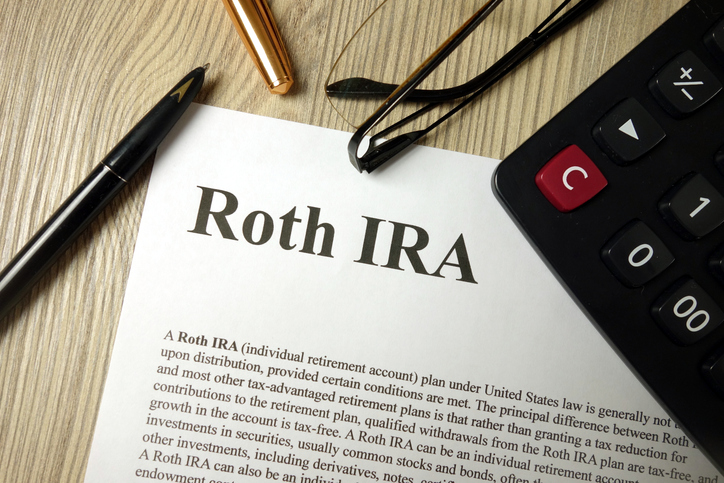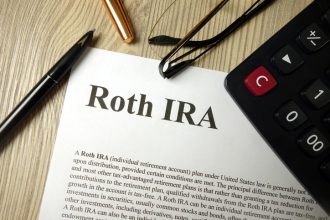A new opportunity has emerged for families with leftover college savings: converting 529 plan funds to a Roth IRA. Previously, withdrawing 529 funds for non-educational expenses meant facing income tax and a 10% penalty on earnings, creating a dilemma for families whose children received scholarships or chose not to attend college. But thanks to the SECURE 2.0 Act passed in December 2022, beneficiaries can now redirect up to $35,000 of unused education savings toward retirement. This provides a tax-advantaged alternative to traditional withdrawal options, though it’s necessary to meet specific requirements to take advantage.
Who’s Eligible to Convert a 529 Plan to a Roth IRA?
For those considering the option to convert a 529 plan to a Roth IRA, timing matters significantly. The 529 account must have been established for at least 15 years before any funds can be transferred to a Roth IRA. This waiting period is to ensure the educational savings vehicle is used as intended for a substantial period before the funds are repurposed.
Additionally, the beneficiary of the 529 plan must be the same person who will own the Roth IRA receiving the funds. This requirement prevents families from shuffling money between different family members to circumvent contribution limits. The rule maintains the original intent of helping the same individual transition unused educational funds toward retirement security.
Only contributions and earnings from those contributions are convertible to a Roth IRA. Any funds that came from previous 529 rollovers are ineligible for conversion. Additionally, contributions made within the last five years, along with their associated earnings, are not convertible, creating another timing restriction to consider.
Unlike direct Roth IRA contributions, which have income eligibility restrictions, the eligibility to convert a 529 plan to a Roth IRA is not subject to income limits. This creates an opportunity for high-income earners who may otherwise be ineligible to make direct Roth contributions due to income limits. However, it’s still necessary to meet all other conversion requirements regardless of income level.
Converting a 529 Plan to a Roth IRA

The SECURE 2.0 Act introduced a game-changing opportunity for families with leftover college savings: the ability to roll over unused 529 plan funds to a Roth IRA. This provision, which took effect in 2024, offers a strategic way to repurpose education savings for retirement without tax penalties. Here’s how to navigate the process:
Check Eligibility Requirements
The 529 plan must have been open for at least 15 years, and the beneficiary of the Roth IRA must be the same as the 529 plan beneficiary. This timeline requirement ensures the funds were genuinely intended for education rather than as a tax-avoidance strategy.
Verify the Source of Contributions
Only contributions and earnings that have been in the 529 plan for at least five years are eligible for rollover. You cannot immediately transfer recent deposits to take advantage of the tax benefits.
Contact Institutions to Coordinate the Transfer
It’s necessary to execute the rollover as a direct trustee-to-trustee transfer to avoid tax complications. Your 529 plan administrator and the Roth IRA custodian will have specific forms and procedures to follow.
Advantages of Converting a 529 Plan to a Roth IRA
One significant advantage of converting a 529 plan to a Roth IRA is maintaining tax-advantaged growth. Both accounts offer tax-free growth potential, meaning the transition preserves the tax benefits you’ve already accumulated. Your beneficiary gains retirement savings without losing the tax advantages that made the 529 attractive initially.
Traditional withdrawals of unused 529 funds for non-educational expenses trigger income taxes plus a 10% penalty on earnings. Converting to a Roth IRA eliminates these penalties, allowing the beneficiary to use the funds for retirement instead. This creates a win-win situation, where savings remain tax-advantaged regardless of educational outcomes.
Young adults often struggle to start saving for retirement while managing student loans and entry-level salaries. Converting unused 529 funds to a Roth IRA gives your beneficiary a significant head start on retirement planning. This early investment provides decades of potential compound growth, potentially transforming modest education savings into substantial retirement assets.
Disadvantages of Converting a 529 Plan to a Roth IRA
The rollover of 529 plan to a Roth IRA comes with strict financial constraints. Currently, there’s a lifetime rollover limit of $35,000, which may represent only a fraction of funds in well-funded 529 accounts. This cap means families with substantial education savings might still face decisions about how to manage leftover funds if their student doesn’t need the full balance.
Timing restrictions create another hurdle for families considering this option. The 529 account must have been open for at least 15 years before any funds can be rolled over to a Roth IRA. This waiting period eliminates flexibility for newer accounts, even if circumstances change and you no longer need education funds.
The conversion option isn’t available to everyone. Only the 529 plan beneficiary—typically the student—can convert funds to their own Roth IRA. Parents or account owners cannot redirect unused education funds to their retirement accounts. This limits the usefulness for families where parents might benefit more from retirement savings than their financially established children.
Bottom Line

Learning how to convert a 529 plan to a Roth IRA represents a significant development for families with education savings. This relatively new option provides flexibility when you don’t fully utilize education funds, allowing you to repurpose those savings for retirement instead of facing penalties for non-educational withdrawals. Remember that you must meet specific requirements: the 529 account must be at least 15 years old, conversions are limited to the beneficiary’s name and annual conversion amounts cannot exceed the Roth IRA contribution limit, with a lifetime maximum of $35,000.
Roth Conversion Tips
- If you need help timing a Roth conversion or figuring out how much to convert, speak with a financial advisor. Finding a financial advisor doesn’t have to be hard. SmartAsset’s free tool matches you with vetted financial advisors who serve your area, and you can have a free introductory call with your advisor matches to decide which one you feel is right for you. If you’re ready to find an advisor who can help you achieve your financial goals, get started now.
- Instead of converting your entire pre-tax balance at once, consider partial conversions over several years. This helps you avoid bumping yourself into a higher tax bracket and gives you more control over your long-term tax liability.
Photo credit: ©iStock.com/Melpomenem, ©iStock.com/Piotrekswat, ©iStock.com/zimmytws
Read the full article here
















